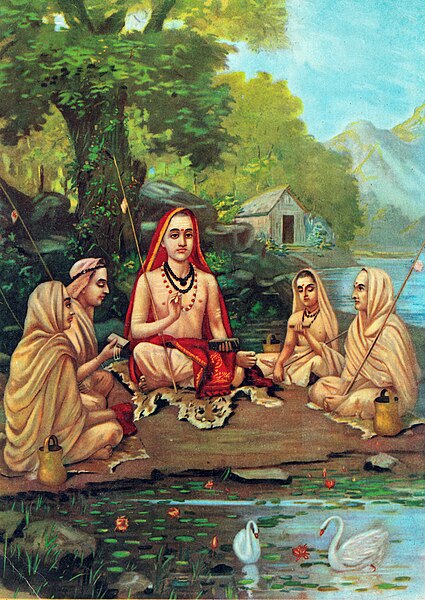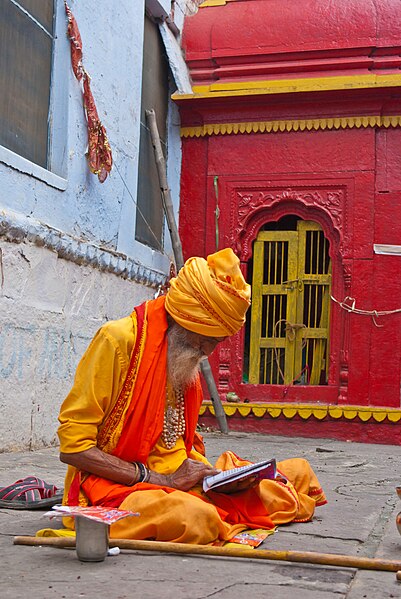Jnana yoga, also known as the jnana marga, is one of the three classical paths (margas) for moksha (liberation) in Hinduism, which emphasizes the "path of knowledge", also known as the "path of self-realization". The other two are karma yoga and bhakti yoga. Modern interpretations of Hindu texts have yielded systems, techniques and formulations such as raja yoga and kriya yoga.
Adi Shankara with Disciples, by Raja Ravi Varma (2000), propounding Advaita philosophy.
Moksha, also called vimoksha, vimukti, and mukti, is a term in Hinduism, Buddhism, Jainism and Sikhism for various forms of emancipation, liberation, nirvana, or release. In its soteriological and eschatological senses, it refers to freedom from saṃsāra, the cycle of death and rebirth. In its epistemological and psychological senses, moksha is freedom from ignorance: self-realization, self-actualization and self-knowledge.
Gajendra Moksha (pictured) is a symbolic tale in Vaishnavism. The elephant Gajendra enters a lake where a crocodile (Huhu) clutches his leg and becomes his suffering. Despite his pain, Gajendra constantly remembers Vishnu, who then liberates him. Gajendra symbolically represents human beings, Huhu represents sins, and the lake is saṃsāra.
Jñāna yoga
Bhakti yoga
Rāja marga




